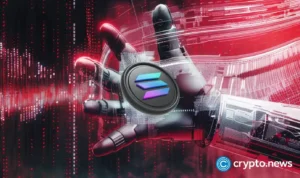DeFi TVL Hits $60B: Institutional Adoption Sparks Crypto Lending Surge

The Evolution of Decentralized Finance: A Shift Towards Sustainability and Institutional Adoption
The Rise of the DeFi Mullet: Merging Fintech with DeFi
Decentralized Finance (DeFi) is experiencing a significant transformation, moving away from the speculative trends that characterized previous market booms. This evolution is now focused on creating a sustainable ecosystem driven by institutional interest and the incorporation of Real-World Assets (RWAs). A recent analysis from Artemis and Vaults.fyi highlights that the total value locked (TVL) in leading DeFi lending platforms, including Aave, Euler, Spark, and Morpho, has surged by 60% over the past year, nearing $60 billion. This increase in locked capital signifies a shift towards a more mature financial framework, attracting long-term investments through advanced risk management strategies.
A notable trend fueling this growth is the “DeFi mullet” strategy, which combines a user-friendly fintech interface with a powerful DeFi infrastructure behind the scenes. This approach enables everyday users to engage with complex financial products without needing to understand the underlying DeFi protocols. For instance, Coinbase’s collaboration with Morpho has facilitated over $300 million in Bitcoin-backed loans. Additionally, Bitget Wallet utilizes Aave’s infrastructure to provide a stable 5% yield on USDC and USDT. This demand for utility is reflected in the performance of related tokens, such as AAVE, which is currently trading at $278.04, showing a 1.87% increase, supported by solid trading volumes. This trend indicates that traders are focusing on the fundamental value of these assets rather than speculative trends.
Transforming Finance: The RWA Revolution
The integration of Real-World Assets is another pivotal factor reshaping DeFi from a niche sector into a parallel financial ecosystem. Initially, this involved the tokenization of traditional assets like U.S. Treasuries, allowing for stable yields to be brought on-chain. The market is now evolving towards more sophisticated, crypto-native structured products. A groundbreaking development is the tokenization of the reinsurance market, valued at $784 billion, which has historically been opaque and difficult to access. By bringing this sector on-chain, DeFi opens up new avenues for capital flow and innovative investment opportunities. For example, envision a structured product that combines a yield-generating stablecoin, such as Ethena’s sUSDe, with a tokenized pool of reinsurance risk. Such a product could yield returns in various market conditions while capturing collateral yield during bullish phases, offering potential returns that are less correlated with the volatility of the broader crypto market. This innovation marks a transition from merely mimicking traditional finance to creating entirely new, more efficient financial systems on-chain.
Market Trends and Investment Opportunities
This fundamental transformation is occurring alongside a generally positive market sentiment. While the focus remains on enhancing DeFi infrastructure, major Layer-1 blockchains are also reaping the benefits. Solana (SOL) has demonstrated notable strength, rising 3.25% to $151.35, while Ethereum (ETH) has achieved a solid 1.84% gain, reaching $2,547.13. The ETH/BTC trading pair also shows positive momentum for Ethereum, climbing to 0.023360. For traders, it is crucial to look beyond short-term price movements and delve into the underlying factors driving these trends. The emergence of on-chain asset managers, whose assets under management have quadrupled from $1 billion to over $4 billion since January, indicates a professionalization of the DeFi space. This managed capital is increasingly directed towards structured yield products and RWAs, establishing a stable foundation for future growth. Tokens linked to these developments, such as AAVE, Maker (MKR), and even AI-related assets like Fetch.ai (FET), which has risen 2.27% to $0.676, are well-positioned to benefit. Traders should keep an eye on the growth of TVL in these protocols and the expansion of RWA integrations as key indicators for sustained price growth and new, diversified yield opportunities.







